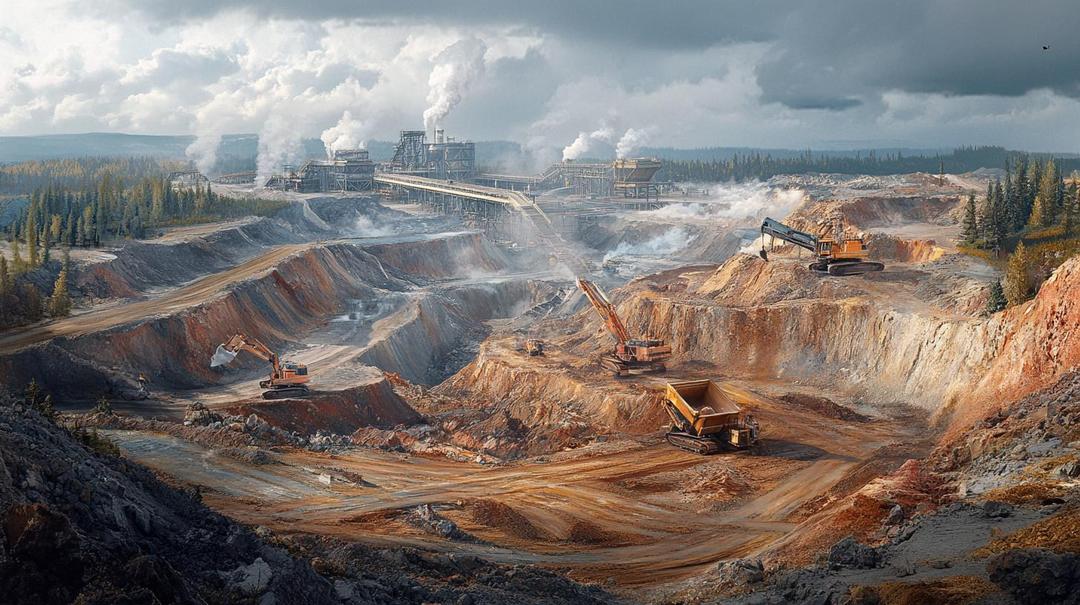Did you know that the smartphone in your hand owes its power to rare earth elements? Despite their name, these minerals aren’t rare—but mining and refining them is a political and economic chess game. From powering green tech to shaping global power dynamics, rare earths find themselves at the epicenter of nations and industries battling for greater control over these vital resources. Ready to explore the geopolitical tensions, environmental concerns, and industry trends behind the politics of rare earth mining?
Let’s dive in.
What's Inside
What Are The Politics of Rare Earth Mining?
Unlike traditional mineral resources, rare earth elements are uniquely positioned at the intersection of technological innovation and geopolitical strategy. Their scarcity, concentration in specific geographic regions, and critical role in emerging technologies make them a powerful economic and strategic asset.
Mapping the Global Rare Earth Dominance
China has emerged as the undisputed leader in rare earth production, controlling approximately 60-70% of global supply. This monopoly provides significant geopolitical leverage:
China’s Strategic Position
- Controls most mining and processing facilities
- Developed extensive rare earth infrastructure over decades
- Can potentially manipulate global supply chains
Emerging Competitors
Countries are actively working to challenge China’s dominance:
- United States: Investing in domestic production and processing capabilities
- Australia: Rapidly developing mining infrastructure
- Canada: Exploring significant rare earth deposits
- Vietnam: Emerging as a potential alternative production center
Environmental and Social Costs of Rare Earth Mining
Rare earth extraction comes with substantial environmental challenges:
Mining Impact
- Significant landscape destruction
- Chemical waste contamination
- High water consumption
- Radioactive material generation
Community Consequences
- Displacement of local populations
- Health risks from toxic mining byproducts
- Limited economic benefits for host communities
Geopolitical Tensions and Strategic Implications
Rare earth elements have become a critical strategic resource, transforming international relations:
Trade War Dynamics
- 2010 U.S.-China rare earth dispute demonstrated potential economic weapon
- Potential for supply chain disruption in critical industries
- National security implications for technology and defense sectors (opens in a new tab)
Resource Nationalism
- Countries increasingly view rare earth reserves as strategic national assets
- Growing emphasis on controlling and protecting mineral resources
- Diplomatic tensions emerging around resource access
Policy Landscape and International Initiatives
Key Policy Approaches
- U.S. Inflation Reduction Act supporting domestic mining
- European Union’s raw materials diversification strategy
- China’s strategic export controls
Multilateral Collaborations
- Quad partnership (U.S., India, Japan, Australia) developing alternative supply chains
- International research initiatives for sustainable extraction
Rare Earth Recycling: Potential Solutions
Technological Advancements
- Emerging recycling technologies
- Challenges in economic feasibility
- Pilot programs showing promise
Recycling Benefits
- Reduced environmental impact
- Decreased dependence on mining
- Potential for circular economy model
Future Outlook
Projected Demand Drivers
- Electric vehicle expansion
- Renewable energy infrastructure
- Artificial intelligence technologies
- Advanced computing systems
Strategic Preparations
- Nations investing in exploration and processing capabilities
- Emphasis on technological innovation
- Growing focus on sustainable extraction methods
Conclusion
Rare earths are at the heart of modern innovation—and the politics surrounding them are heating up. As global demand skyrockets, the race to secure these critical resources has created intense geopolitical rivalries and environmental challenges. Balancing sustainability with supply security remains a crucial challenge for policymakers, businesses, and scientists. So, as nations and industries wrestle for rare earth dominance, one fact is certain: the future of technology depends on getting this balance right.
FAQs
What are rare earth elements, and why are they important?
Rare earth elements (REEs) are 17 metallic elements critical for high-tech applications, including smartphones, electric vehicles, batteries, and defense systems.
Why does China dominate rare earth production?
China’s dominance stems from its vast reserves, early investments in mining infrastructure, and refining technology, which enables it to supply over 60% of the global market.
What environmental problems are caused by rare earth mining?
Rare earth mining generates toxic waste, water pollution, and radioactive byproducts, significantly damaging ecosystems and impacting nearby communities.
Can rare earth recycling reduce reliance on mining?
Yes, recycling could significantly reduce mining dependence. However, it faces technical challenges and limited economic viability, though progress is being made.
How are geopolitical tensions influencing rare earth supply chains?
Geopolitical tensions, especially trade disputes like those between the U.S. and China, have led to concerns about over-reliance and have fueled efforts to diversify supply chains internationally.


Dustin
Driven by a fascination with rare earth elements and their role in powering modern tech and engineering marvels. A true car and tech enthusiast, he loves exploring how these hidden heroes fuel our most exciting innovations.
You Might Also Like…